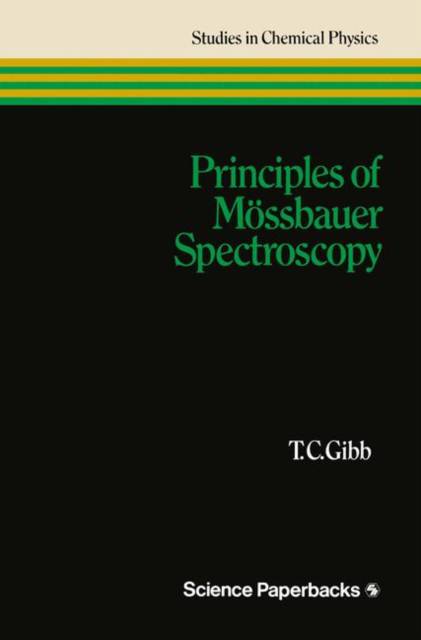
- Afhalen na 1 uur in een winkel met voorraad
- Gratis thuislevering in België vanaf € 30
- Ruim aanbod met 7 miljoen producten
- Afhalen na 1 uur in een winkel met voorraad
- Gratis thuislevering in België vanaf € 30
- Ruim aanbod met 7 miljoen producten
Zoeken
€ 83,95
+ 167 punten
Omschrijving
The emergence of Mossbauer spectroscopy as an important experi- mental technique for the study of solids has resulted in a wide range of applications in chemistry, physics, metallurgy and biophysics. This book is intended to summarize the elementary principles of the technique at a level appropriate to the advanced student or experienced chemist requiring a moderately comprehensive but basically non-mathematical introduction. Thus the major part of the book is concerned with the practical applications of Mossbauer spectroscopy, using carefully selected examples to illustrate the concepts. The references cited and the bibliography are intended to provide a bridge to the main literature for those who subseouent- ly require a deeper knowledge. The text is complementary to the longer research monograph, 'Mossbauer Spectroscopy', which was written a few years ago in co-authorship with Professor N.N. Greenwood, and to whom I am deeply indebted for reading the preliminary draft of the present volume. I also wish to thank my many colleagues over the past ten years, and in particular Dr. R. Greatrex, for the many stimu- lating discussions which we have had together. However my greatest debt is to my wife, who not only had to tolerate my eccen- tricities during the gestation period, but being a chemist herself was also able to provide much useful criticism of the penultima te draft.
Specificaties
Betrokkenen
- Auteur(s):
- Uitgeverij:
Inhoud
- Aantal bladzijden:
- 254
- Taal:
- Engels
- Reeks:
Eigenschappen
- Productcode (EAN):
- 9780412230608
- Verschijningsdatum:
- 2/10/1980
- Uitvoering:
- Paperback
- Formaat:
- Trade paperback (VS)
- Afmetingen:
- 156 mm x 234 mm
- Gewicht:
- 376 g

Alleen bij Standaard Boekhandel
+ 167 punten op je klantenkaart van Standaard Boekhandel
Beoordelingen
We publiceren alleen reviews die voldoen aan de voorwaarden voor reviews. Bekijk onze voorwaarden voor reviews.








